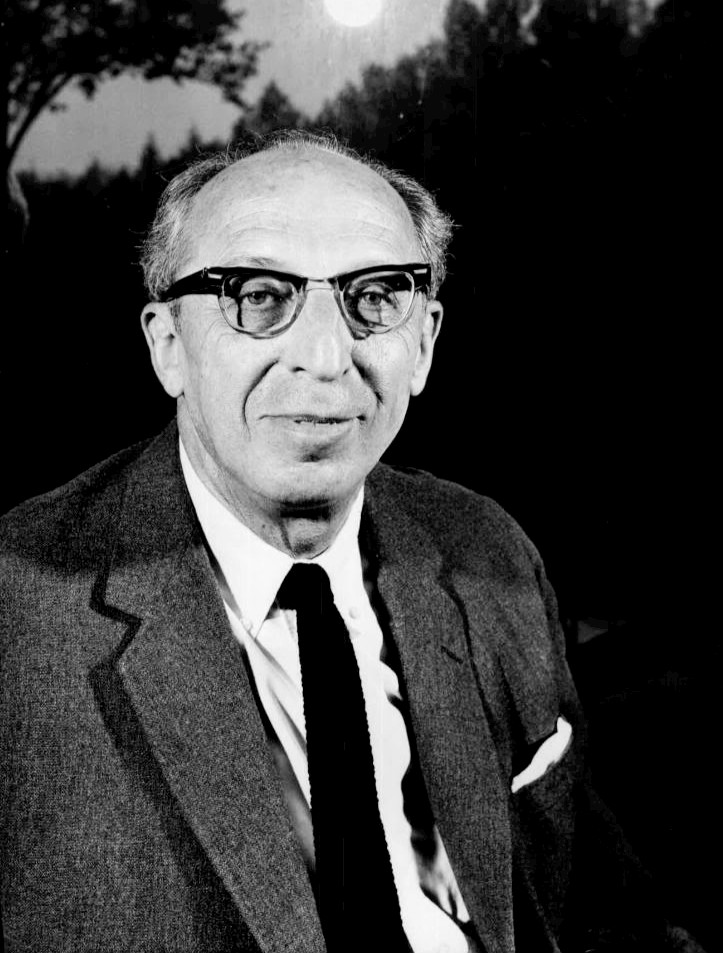Copland's Fanfare
by Roger Kaza
Today, an uncommonly fine fanfare. The University of Houston presents this program about the machines that make our civilization run, and the people whose ingenuity created them.
You've heard it a million times, Copland's iconic Fanfare for the Common Man. It was commissioned during World War II by conductor Eugene Goosens of the Cincinnati Symphony, as part of a series of short fanfares by noted composers of the day. The idea was to support the troops abroad and build morale at home. Yet of the nineteen fanfares written and performed, Copland's is the only one we still play with any regularity. What became of the others?

Aaron Copland in 1962
Photo Credit:Wikimedia.
I found some of them on an obscure CD of the London Philharmonic. Deems Taylor's Fanfare for Russia evokes the Slavic choral tradition. [Taylor musical example]
Howard Hanson's fanfare seems to be foreshadowing an entirely different war, fought in space. Ten-year old John Williams, were you listening? [Hanson musical example]
Composer-critic-gadfly Virgil Thompson quotes a familiar tune seemingly without irony, in his Fanfare for France. [Thompson musical example]
Guess you had to be there.
Other fanfares are earnest affairs, maybe deeply felt in their own time, but no longer resonant in ours. A few remind me in verbosity of what I imagine of Edward Everett's two-hour oration preceding the Gettysburg address. (Background music: [Walter Piston Ceremonial Fanfare].) Copland, like Lincoln, somehow hit all the right notes in a few short minutes. How did he do it?
The fanfare begins with dramatic drum and gong strokes, then a unison line in three trumpets, outlining open intervals of fourths and fifths. [Copland Fanfare]
Horns join in for two-part harmony, but harmony no singers would ever choose, peppered with bracing dissonances. Finally trombones and tuba add heft and mass. The fanfare hits its stride. Copland seems intent on bringing us home to the key of B flat which has permeated the work from the start. But, if home means a raging global war--or in our time a deadly pandemic--maybe home is not where we want to end up. So in a stroke of genius, the fanfare suddenly modulates to D major, key of triumph. We will get past this, Copland seems to be saying. Hear, hear.
I'm Roger Kaza, from the University of Houston, where we're interested in the way inventive minds work.
The performance of Fanfare for the Common Man used in this episode is by the St. Louis Symphony, Leonard Slatkin conducting, from "American Portraits". Fanfares by Taylor, Hanson and Thompson are from "Twenty Fanfares for the Common Man,"London Philharmonic, Jorge Mester conducting. Twelve of Eugene Goosen's nineteen commissions can be found on this CD, along with other little-known fanfares by Copland and Bernstein. (Although the CD is no longer in print nor available on Spotify or other music services, it can be found used online.)
Notes from the Cincinnati Symphony about the origin and first performance of the fanfare.
An interesting Covid-19-inspired performance of the Fanfare,
The reference to John Williams is facetious and it's unlikely he heard Hanson's fanfare at the time, though possibly later.
"D major, key of triumph." This is of course a subjective evaluation, but works like Handel's Hallelujah Chorus and Mozart's Exsultate Jubilate as well as many other examples lend credence to it. Most trumpet fanfares and voluntaries are written in D. See Engines No. 2353 for more on keys and their associations.
Copland must have realized he had a hit on his hands, as he reused the Fanfare in the fourth movement of his epic Third Symphony, written in 1944-1946. It was my great privilege as a young French horn player to perform the Fanfare under the composer's direction in July of 1980, at Tanglewood, Lenox, Massachusetts, in a concert celebrating his 80th birthday.
Dedicated to the memory of Tom Nevling, Renaissance Man and fan of the Fanfare.
This episode was first aired on July 7, 2020